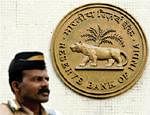
Though inflation in non-food manufactured products has shown some moderation but “food inflation remains disconcertingly high despite a normal monsoon.” This RBI has attributed partly to a change in the consumption pattern in favour of protein-rich items like egg, milk, fish and meat where price increases have been high.
This was disclosed in a report on “Macroeconomic and Monetary Developments in the second quarter of 2010-11” released on Monday. RBI is expected to raise key rates by at least 25 basis points each. Experts perceive that RBI’s comfort level of inflation is between 5 to 6 per cent.
Further, the report said though the current data on indicators of economic performance remain consistent with the 8.5 per cent growth projected in the July 2010 Monetary Policy Statement, given the weakening external demand conditions and the need for fiscal consolidation, sustained growth will hinge increasingly on private consumption and investment demand.
Trends in production of capital goods, capital expenditure plans of corporates, non-oil imports and growth in credit as well as financing from non-banking sources during 2010-11 so far suggest strong conditions for investment activities, it noted.
Private consumption expenditure data for the first quarter of 2010-11 and the trends in corporate sales as well as production of consumer durables point to a pick up. Both the revenue deficit and fiscal deficit, as percentage of GDP, have been lower this year so far relative to the corresponding period of last year.
However, it observed, there has been higher growth in both revenue and capital expenditure this year. These provide demand support to the growth process. At the same time, the contribution of net exports to growth on the expenditure side of GDP was negative in the first quarter of 2010-11 and this trend is expected to continue during the rest of the year.
It points out that the current account deficit in balance of payments widened in the first quarter of 2010-11 due to higher trade deficit and moderation in the surplus in the invisibles account.
Capital inflows, led by FII flows in recent months, have met the financing needs of the current account deficit.
The current account deficit, as percentage of GDP, could be expected to be higher in 2010-11 than 2.9 per cent recorded in 2009-10. While the deficit may be fully financed by capital inflows, the potential volatility in such flows poses some risk.